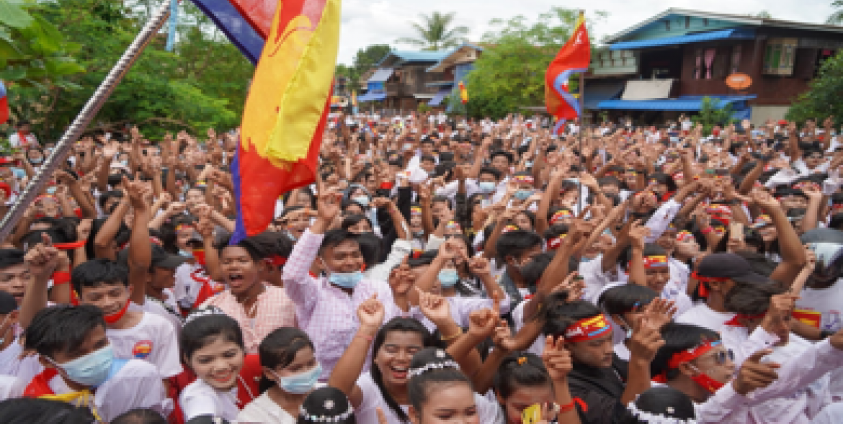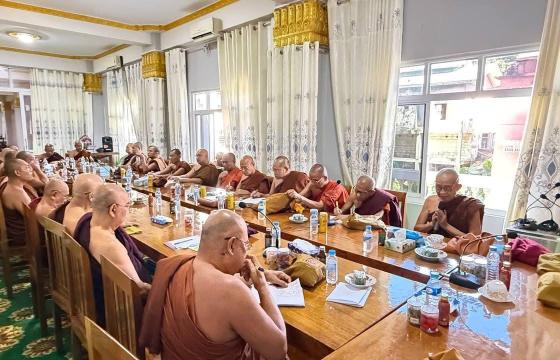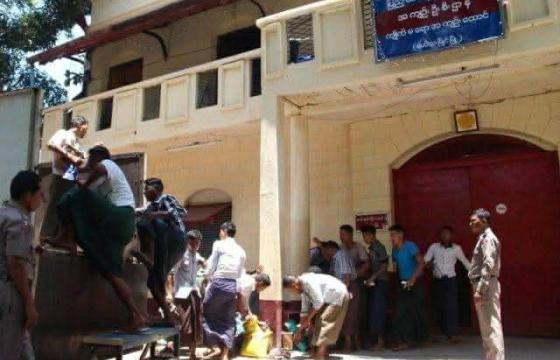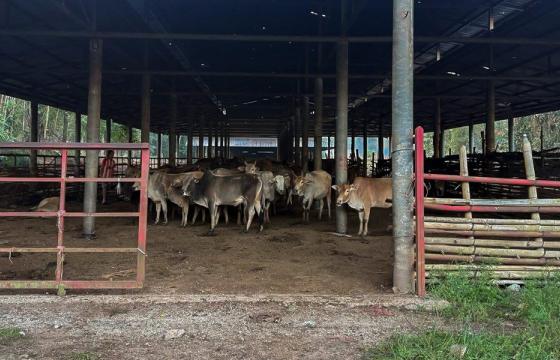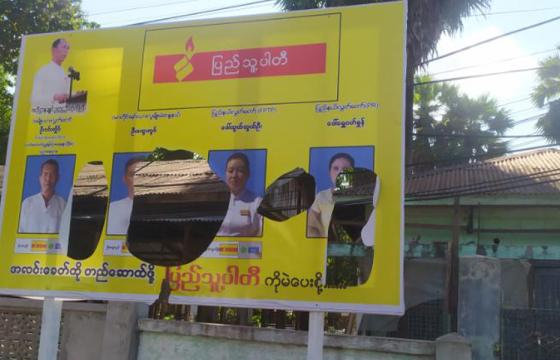*NAI BANYA MON - Taking lessons from their losses in Burma’s 2015 general election, ethnic political parties merged ahead of the 2020 polls and prepared to compete against larger, central parties.
They rallied greater support from ethnic communities, and expected to win a majority of seats in the country’s November 8 election. But it didn’t happen.
Instead, the National League for Democracy (NLD) won more than 80 percent of the seats up for grabs: 258 Lower House seats, 138 Upper House seats, and a total of 501 seats across the country’s state and regional parliaments.
In contrast, ethnic political parties won 31 Lower House seats, 16 Upper House seats, and 47 seats in state and regional parliaments.
Since the election, “lack of capacity” among ethnic political parties has been blamed for their losses. But there are a range of other explanations for the electoral results, attributed to Burma’s own voting system and a series of structural limitations which favor larger parties and centralized politics.
Winner takes all
Burma employs the “winner takes all” First Past the Post (FPTP) voting system, which favors victories for larger political parties rather than proportional representation among many parties. FPTP is suited for a system dominated by two parties, such as the United States, which sees electoral competition between the Democrats and Republicans. It is not suited to a country with dozens of parties, like Burma. Yet it remains an electoral practice left over from Burma’s past, including the initial parliamentary democracy period following independence from the British in 1948, and the first elections after decades of military rule in 1990. It is of note that in all of these circumstances, Bamar-majority political parties—including the Anti-Fascist People’s Freedom League, the Union Solidarity and Development Party (USDP), and the NLD—emerged as winners, likely not in small part because of the voting system in place.
The problematic nature of the FPTP voting system was illustrated in this year’s election in Karen State, where seven seats were voted upon for the Lower House. The NLD won six, and the Union Solidarity and Development Party (USDP) won one. The fact that the ethnic Karen National Democratic Party (KNDP) did not win any seats does not indicate that they did not receive support from the Karen people. While the KNDP got fewer votes than the NLD in the state, they actually received more votes than the USDP. But under the FPTP voting structure, they will have no representation in the legislature.
Another reason why FPTP has been considered incompatible with a multi-party electoral system is the lower likelihood that the winning party can obtain more than 50 percent of the votes in a given constituency, due to a wider distribution of votes among parties. In 2015, the NLD won 255 out of 330 available seats, but many winning NLD candidates, while receiving the most votes in their constituency, still received a total of less than half of the ballots. The NLD won more than 50 percent of the votes in four out of 18 townships in Kachin State, for example. But in Mansi Township, the party won just 30.28 percent of the votes and still claimed the seat. Similarly, throughout Karen State, the NLD won the majority of seats, but only won more than 50 percent of the vote in one township: Myawaddy.
Townships as constituencies
The practice of gerrymandering is also apparent in Burma, in which constituencies are drawn up to favor one party. In Burma, parliamentarians are elected for areas not determined by population size, but by townships, giving an advantage to those in Burma’s seven regions, which have significantly more townships than ethnic states and are also largely home to the Bamar majority. Of the country’s 330 townships, 207 are in these regions, with just 123 in the seven ethnic states. This creates a nearly two-to-one ratio of MPs from Bamar-dominated constituencies to ethnic constituencies in the Union Parliament.
These township-based constituencies provide greater opportunity for larger parties to dominate multiethnic townships—particularly urban areas—where a number of local parties have run for election but failed to gain traction. The vote splitting that occurs under the FPTP voting system inevitably gives way to the larger party.
Because the parliamentary constituencies are based on township boundaries rather than population, the NLD’s six Lower House seats in Karen State were won with 330,000 votes. But in Chin State, the NLD won eight seats with just 100,000 votes.
Population shifts
One cannot assess the voting results without looking at displacement and migration, both domestically and internationally. Huge numbers of ethnic people have been displaced by Burma’s decades-long civil war, with many being forced across borders to Bangladesh, China, India and Thailand. Those internally displaced people still within Burma’s borders are thought to number some 2 million. Few were able to cast their ballots in the country’s general election, raising questions about how the outcomes might have been different if they had been able to vote in their home constituencies.
Outside of Burma, there are some 4 million migrant workers from the country working abroad; most are from ethnic communities disproportionately impacted by civil war, military oppression, and natural resource and land exploitation. While these migrant workers were eligible to cast their ballots at the Burmese embassy in their respective host countries, many were limited from doing so by travel costs and complicated administrative procedures. According to official figures, there were 1.6 million known eligible voters abroad for the 2020 election, but less than 40,000 people voted at Burmese embassies worldwide.
While multiple obstacles stop Burmese nationals from voting after having migrated outside the country, the government has made it easier for domestic migrants to vote in their host constituencies throughout Burma. In 2020, they were required to have lived in the new township for 90 days prior to the election, but in 2015 the residency requirement was six months.
As migrant workers typically move place to place, the Union Election Commission (UEC) should ensure that they are able to cast advance votes in their native constituencies, as they did for people who had recently arrived in townships under COVID-19-related lockdowns.
The changing demographics brought on by domestic migration disproportionately impact ethnic states, where locals and permanent residents say they feel as though people from other areas of the country are making critical decisions about the rights of their people in their state. This inevitably impacts the building of a federal Union, a longtime key demand by ethnic populations and leaders.
A government-controlled UEC
Burma’s UEC is often perceived as an independent body, but in accordance with the military-drafted 2008 Constitution’s Article 398, the commission is formed by the President. The President maintains his or her influence over the UEC through Article 400 of the Constitution, which allows him or her to “impeach” either the chair or members of the UEC if they “cannot successfully implement the designated duties,” effectively giving the central government control over the institution.
Among the UEC’s responsibilities are the monitoring of election sub-commissions, establishing constituencies, creating and allowing changes to be made to the voter list, and calling off voting in constituencies where there is regional instability or disasters which would not allow the election to be free or fair.
According to Article 402 of the election law, the UEC has the power to demand suo moto the proceedings and documentation from each sub-commission to review and act upon, with the UEC’s judgment final and conclusive. This places all electoral processes in the realm of the UEC, which is created and influenced by the ruling party—in this case the NLD. The UEC, therefore, is not an unbiased commission.
Many people have criticized the UEC for canceling the votes of more than 1 million people in more than 50 constituencies in the 2020 election, mostly in Rakhine and Shan States, but also in Chin, Kachin and Karen states. Yet there is no independent institution in Burma to resolve these complaints, or any disputes related to election matters.
These circumstances disenfranchise ethnic voters and do not allow for the establishment of fair conditions in which ethnic political parties can compete.
A new free and fair electoral system
If the FPTP electoral system continues to be practiced in Burma, state-based ethnic political parties will not be able to compete with the larger political parties of central Burma. In the long term, they are likely to disappear.
U Aung Htoo, a lawyer and the principal of the Federal Law Academy in Kachin State, has emphasized how, if Burma continues to rely on FPTP to choose its representatives, few ethnic MPs will be able to serve in parliament, and those who do will be unable to create laws.
While it is arguably more complicated, experts like U Aung Htoo advocate for the electoral system of Proportional Representation as a better fit for a country as politically diverse as Burma.
In the fourth session of the 21st Century Panglong Peace Conference, even Burma’s military chief Snr-Gen Min Aung Hlaing “advise[d] all to consider” the current FPTP system as well as the system of Proportional Representation. However, this will be difficult to accomplish as long as the military retains its constitutionally mandated 25 percent of parliamentary seats.
If ethnic people want to build a genuine federal Union, they must change the existing 2008 Constitution or draw up a new federal, democratic Constitution. A new free and fair voting system must also be adopted that reflects and embraces the diversity of the country.
*Nai Banya Mon is the Program Director of the Federal Affairs and Policy Center.


